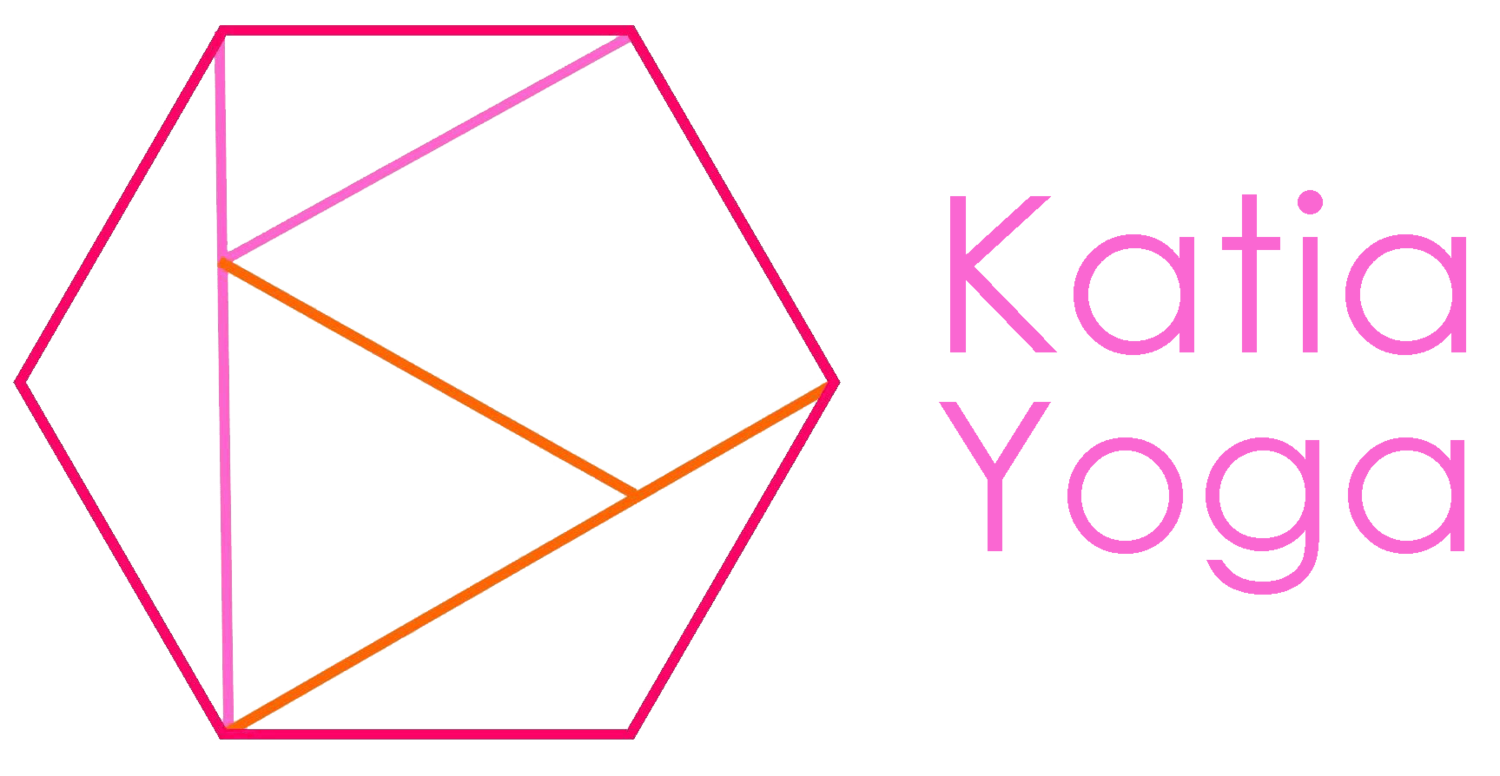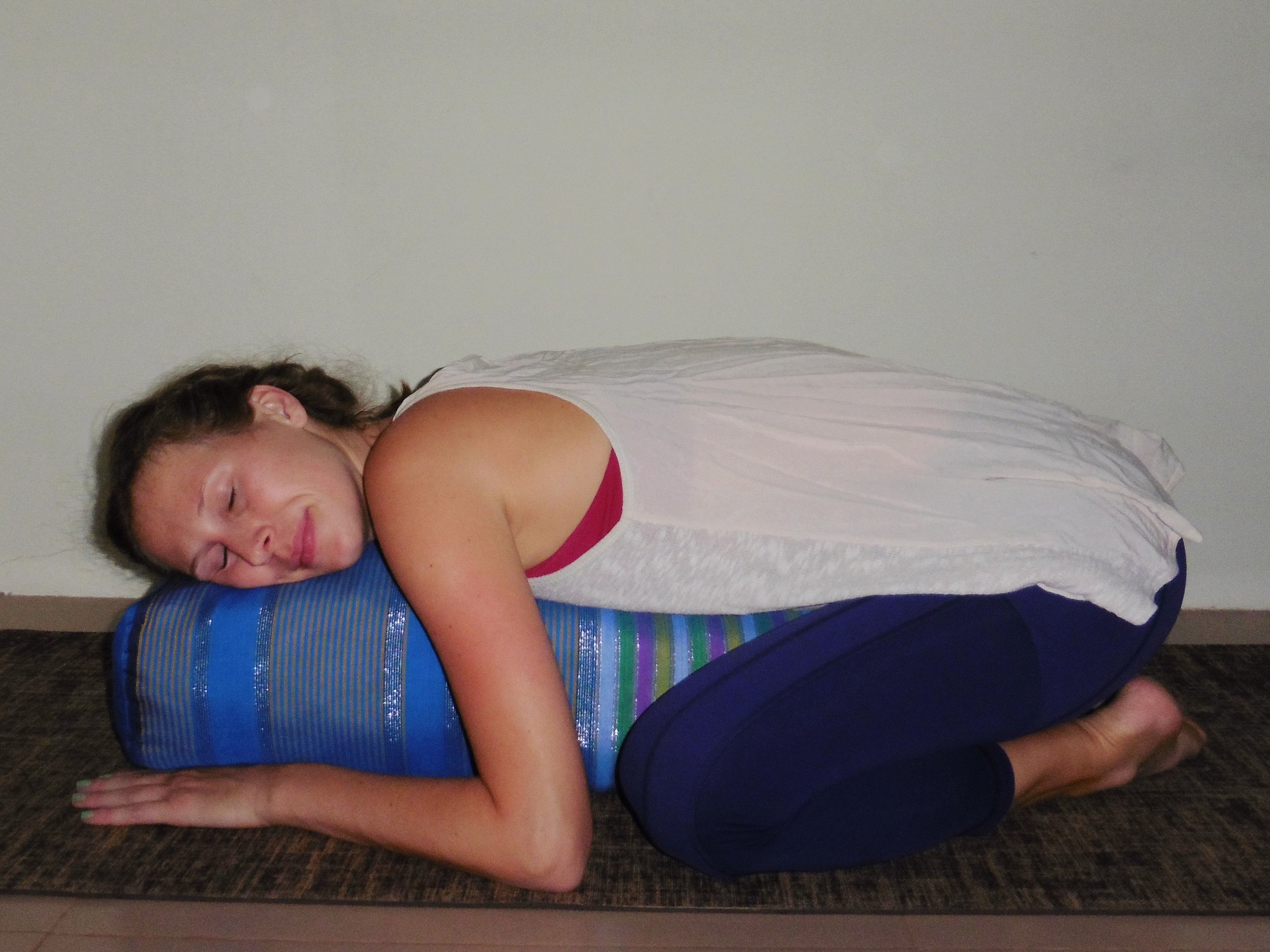Restorative Yoga: 7 Soothing Poses to Try
Restorative Yoga: 7 Soothing Poses to Try




Restorative yoga is one of my new favorite ways to relax. As your stretch, these poses help activate your nervous system. It also increases your energy and helps release tension. The organs also benefit from deep relaxation. Restorative yoga can also help you find balance and focus as you release control and movement of your body and focus on your breath or simply one thought at a time.
[Just so you know this post contains affiliate links]
For most restorative poses you need a bolster, but before I sewed my official yoga bolster, I used a very full bed pillow (or you could try two smaller ones stacked on each other too). Some poses also require a block, a strap, or a blanket. In any of the supine poses (poses on your back), you can also use an eye pillow to block out light and add a little pressure to increase your relaxation.
As with any yoga poses, listen to your body- if it feels uncomfortable or painful, try a different pose instead. I recommend you try these poses for 5-10 minutes, but you can hold them for up to an hour. I recommend using a timer so you can relax your mind rather than wondering and checking how long it's been. In these poses, you can add additional soft props to hold up almost any part of your body that needs a little extra support (eg your arms if they are out to the side, under your knees if they're uncomfortable on the mat, or under your head if your neck would benefit from a pillow in a reclining pose). After each pose, I have also listed a counterpose, but if your body asks you to counter in another way, that's fine too. Here are a few restorative yoga poses for you to try.
Supported Child's Pose
Restorative Yoga: 7 Soothing Poses to Try

To come into this pose, bring your big toes to touch and sit back on your feet with your knees spread open (as you would for traditional balasana). Bring the bolster in close between your legs. Stretch your torso up tall and use your hands to walk your torso forward and fold over the bolster. Once you're laying on the bolster, hug the bolster with your arms. You can turn your head to either side and switch half-way through your pose.Afterward use your hands to help you sit back up. From there, send your weight forward for table top or downward facing dog for a counterpose.Supported child's pose soothes the shoulders and lower back. It's also calming.
Spinal twist







For this pose, put your bolster in the center of the mat so both the mat and the bolster are the long way. Sit sideways beside the short end of the bolster so your knees are bent with your legs tucked behind you (not under you). One hip should be touching the end of the bolster. Turn our torso so that you are facing the top of the mat. Place your hands on either side of the bolster and lengthen upward before folding forward over the bolster. For the pose, you will be laying on the bolster with one arm on the mat on either side of the bolster. You can turn your head either way, depending on how deeply you wish to twist. Afterward, walk your hands in, bringing your torso up. Take a few rounds of cat/cow before doing the same pose on the second side. Try to hold this pose for the same amount of time on each side. After the second side, also do some cat/cow to help release the twist.
There is also a version where you lay on your back with your arms outstretched in line with your shoulders. Bring your shins up parallel with the floor and place a blanket or small pillow between your knees. Then let your legs come down to one side onto the mat as one if they were connected as one leg.
This pose is good for the back muscles, digestion, and breath.
Supported Virasana (Hero Pose)
Restorative Yoga: 7 Soothing Poses to Try


For this pose, begin with the legs in tradition virasana- with the knees bent so the lower legs are outside of the thighs, but both parts are touching the mat. If this is uncomfortable for you, you can try sitting on a bolster (between your legs) to decrease the tension in your knees. When your legs are in position, bring a bolster up behind you, next to your sacrum and slowly use your hands, then forearms to lower yourself back onto the bolster. Once you're laying on the bolster, bring your arms out to the side.When you have finished this pose- due to time or discomfort/tension, slowly come up onto your forearms and sit up, leading with your chest. Take a few rounds of cat/cow to release your back or downward facing dog to work into the legs as well.
Supported virasana helps clear the respiratory system. It can also help sinus and head pains. It also relieves the leg muscles and aids in digestion.
Supported Bridge Pose

For this pose, you need a block instead of a bolster. Lay on your back and bring your heels in close to your pelvis. Press into your feet into the mat to lift your pelvis high enough to bring the block in under your sacrum (the bony area near the base of your spine) with your hands. Rest your sacrum down onto the block and bring your arms down onto the mat at an angle from your body.
When you release from this pose, press into your feet just enough to lift yourself off of your block and remove it from underneath you. Then roll onto your side for a few breaths with your legs bent and tucked toward the chest.
Supported bridge pose stretches out the spine and helps clear the mind.
Supported Reclining Bound Angle Pose








Sit at the lower end of your mat with the soles of your feet touching and your knees open down toward the mat (as you do for traditional Supta Baddha Konasana). You have the option to wrap a yoga strap around your feet below the ankles, over your legs and around your sacrum in the back. Fasten the strap along the side so you can adjust it if you would like.
Bring your bolster in behind your back, all the way up so it's touching your sacrum then slowly lean back, walking your hands back along the mat to help you recline smoothly. You can keep your arms at your side, resting on the mat, or your can stack your hands over your head. The arms overhead configuration is actually an inversion because your arms are above your heart so it changes the way your blood flows, which can be a nice shift.
When you are ready to come out of the pose, roll off of the bolster to the side, release your legs from their strap and rest on your side for a moment with your knees tucked up toward your chest.
Supported Supta baddha konasana helps relieve stress. It is also good for the back and groin. It can lessen menstrual pains. It also helps with breath.
Legs Up the Wall




For this pose, set your bolster right up next to the wall. Then crouch in a little ball, sitting on the bolster, with one side of your body touching the wall. Using your hands to guide you, roll back and toward the center of the mat so your back comes down onto the floor and your hips are still on the bolster. Now your rear should be touching the wall. If this roll doesn't work for you, you can sit on the bolster and lay back, then scoot yourself closer and closer to the wall. Once your rear is touching the wall, extend your legs straight up it. You shouldn't have to engage your muscles much to hold them in place- they should be able to lean against the wall comfortably. Your arms can either come out at an angle from your body, or you can stack your hands overhead with elbows bent.To exit the pose, push yourself off of the bolster, then bring your legs down and roll onto your side. Take a few breaths here.Because the legs are inverted, the blood from your legs will be sent down toward the pelvis then chest. With the arms overhead, the pose version changes the blood flow in your arms as well because they are above the heart.This pose, also called viparita karani, relieves stress and improves the functioning of the parasympathetic nervous system.
Supported Savasana
Restorative Yoga: 7 Soothing Poses to Try

Some people find savasana to be very uncomfortable. You can add a pillow under the knees to help support the legs and lower back or add a blanket under the head and shoulders to support the upper body. The arms rest on the floor at an angle from the body.When you are ready to exit the pose, roll onto one side, with the knees tucked up for stability.Savasana is the tradition final pose in most yoga classes because this neutral position is a great way to let the body relax and rejuvenate from the more strenuous poses. This pose helps relieve stress and fatigue. It also improves posture and breath.
Restorative Yoga
Restorative Yoga is a fantastic way to work on calm, breath, peace of mind, and bodily functions all at once. Treat yourself and give it a try.
And check out the bolster DIY below too if you don’t have one already!











